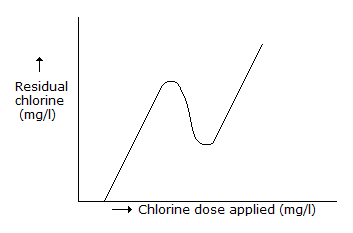Civil Engineering - UPSC Civil Service Exam Questions
Exercise : UPSC Civil Service Exam Questions - Section 22
- UPSC Civil Service Exam Questions - Section 14
- UPSC Civil Service Exam Questions - Section 27
- UPSC Civil Service Exam Questions - Section 26
- UPSC Civil Service Exam Questions - Section 25
- UPSC Civil Service Exam Questions - Section 24
- UPSC Civil Service Exam Questions - Section 23
- UPSC Civil Service Exam Questions - Section 22
- UPSC Civil Service Exam Questions - Section 21
- UPSC Civil Service Exam Questions - Section 20
- UPSC Civil Service Exam Questions - Section 19
- UPSC Civil Service Exam Questions - Section 18
- UPSC Civil Service Exam Questions - Section 17
- UPSC Civil Service Exam Questions - Section 16
- UPSC Civil Service Exam Questions - Section 15
- UPSC Civil Service Exam Questions - Section 1
- UPSC Civil Service Exam Questions - Section 13
- UPSC Civil Service Exam Questions - Section 12
- UPSC Civil Service Exam Questions - Section 11
- UPSC Civil Service Exam Questions - Section 10
- UPSC Civil Service Exam Questions - Section 9
- UPSC Civil Service Exam Questions - Section 8
- UPSC Civil Service Exam Questions - Section 7
- UPSC Civil Service Exam Questions - Section 6
- UPSC Civil Service Exam Questions - Section 5
- UPSC Civil Service Exam Questions - Section 4
- UPSC Civil Service Exam Questions - Section 3
- UPSC Civil Service Exam Questions - Section 2
31.
Consider the following oxides :
1. Al2O3
2. CaO
3. SiO2
The correct sequence in increasing order of their percentage in an ordinary portland cement is
1. Al2O3
2. CaO
3. SiO2
The correct sequence in increasing order of their percentage in an ordinary portland cement is
32.
The modules of elasticity (E) of concrete is given by
33.
A 6 hour storm has 6 cm of rainfall and the resulting runoff was 3 cm. If φ = index remains at the same value, which one of the following is the runoff due to 12 cm of rainfall in 9 hours in the catchment?
34.
In the plot of residual chlorine versus chlorine dose applied shown in the above figure, the curve will not have any (0, 0) point because


35.
Which of the following pairs regarding the defects in timber are correctly matched ?
1. Upsets....due to overmaturity and unventilated star age of wood.
2. Fwciness....due to crushing of fibres running transversel.
3. Star shakes....radial splits widest at the circumference and diminishing towards the centre.
4. Heart shakes....cracks widest at the centre and diminishing towards the outer circumference.
Select the correct answer using the codes given below.
1. Upsets....due to overmaturity and unventilated star age of wood.
2. Fwciness....due to crushing of fibres running transversel.
3. Star shakes....radial splits widest at the circumference and diminishing towards the centre.
4. Heart shakes....cracks widest at the centre and diminishing towards the outer circumference.
Select the correct answer using the codes given below.
Quick links
Quantitative Aptitude
Verbal (English)
Reasoning
Programming
Interview
Placement Papers